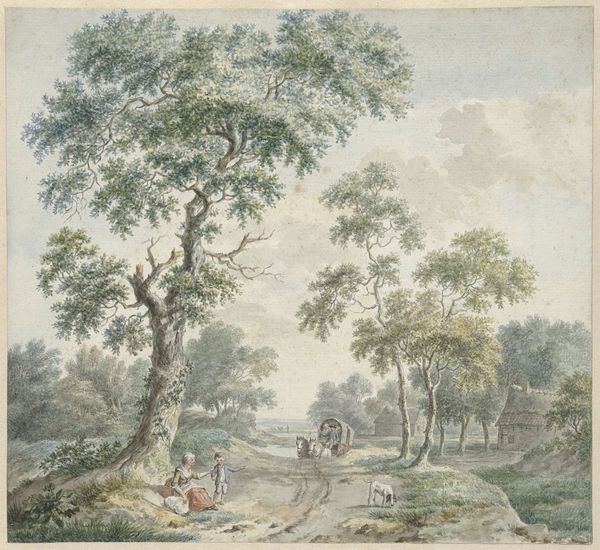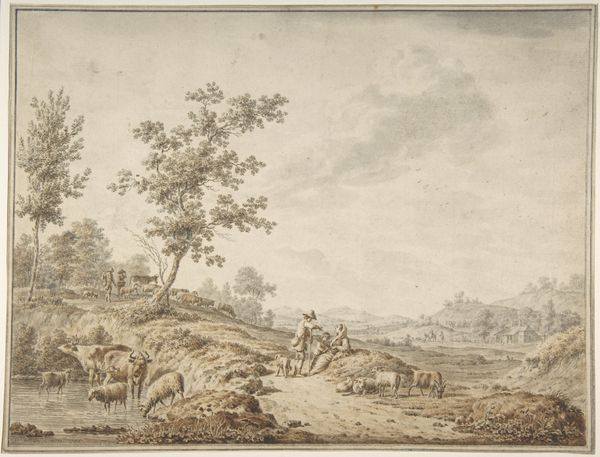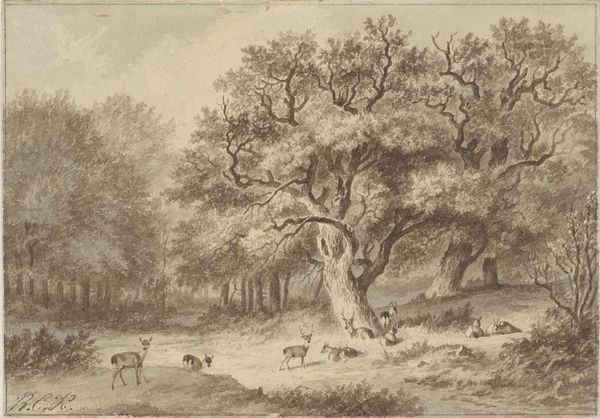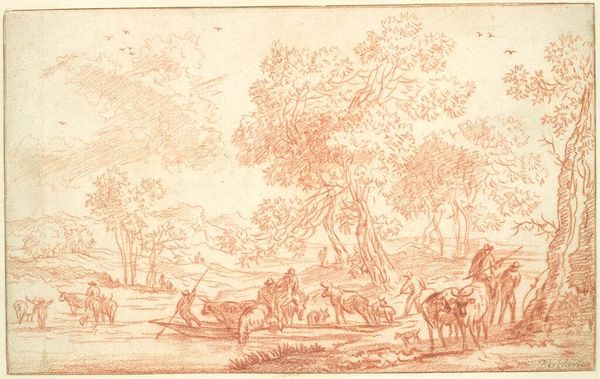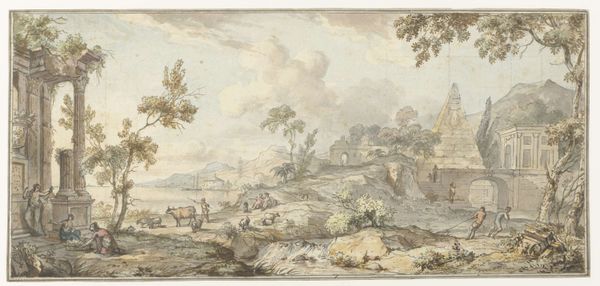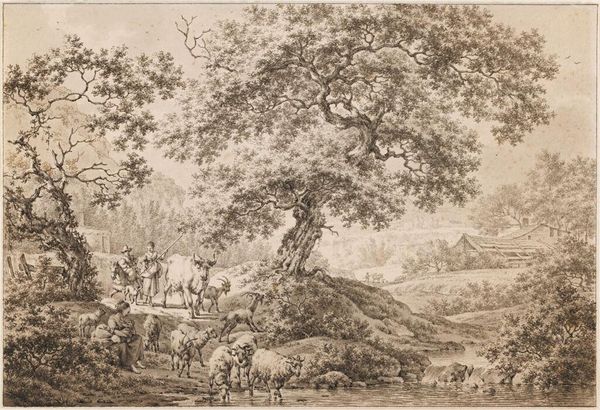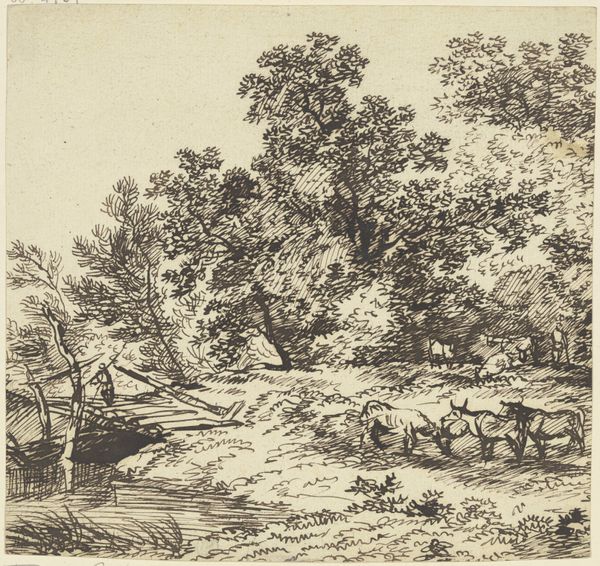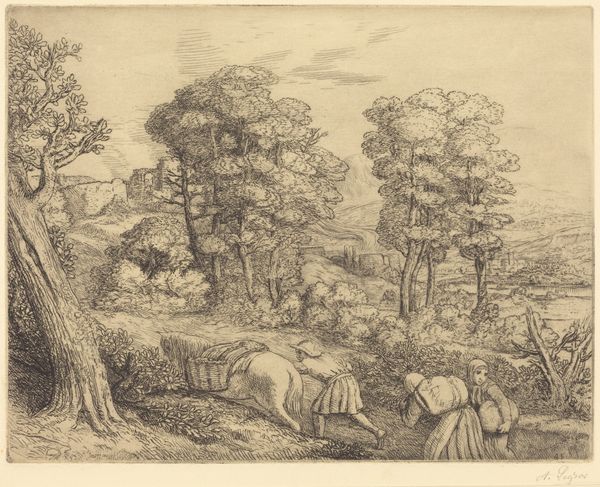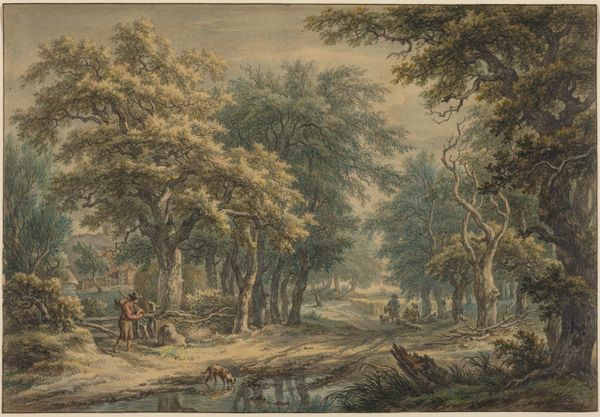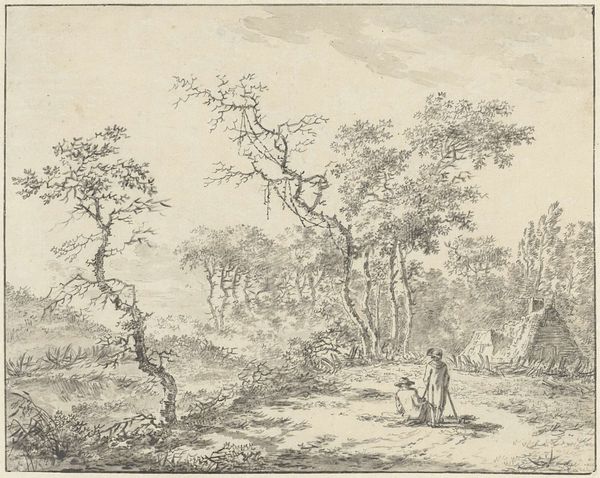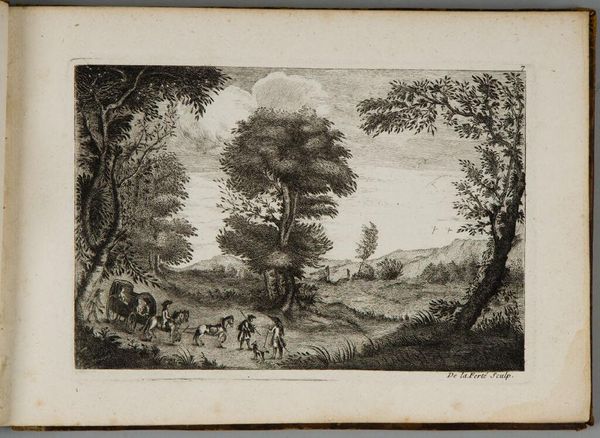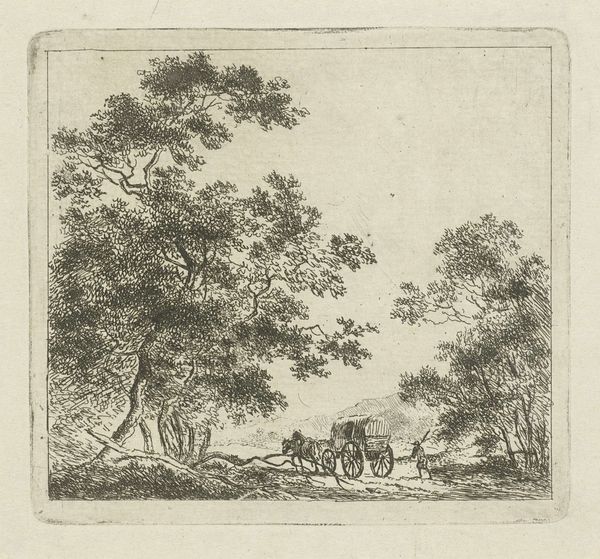
watercolor
#
landscape
#
figuration
#
watercolor
#
coloured pencil
#
romanticism
#
watercolour illustration
#
genre-painting
#
realism
Dimensions: height 382 mm, width 486 mm
Copyright: Rijks Museum: Open Domain
Curator: Welcome! Here we have Pieter Gerardus van Os's "Landscape with Two Shepherds and Livestock" from 1797, currently residing at the Rijksmuseum. The work employs watercolor, offering us a window into the artist’s perspective on rural life. What are your immediate thoughts? Editor: There's a stillness, almost a reverence, isn't there? It feels like looking into a secret glade where time slows. I’m immediately drawn to the hazy, almost dreamlike quality the watercolor lends. It reminds me of half-remembered stories from childhood. Curator: Precisely! Van Os’s choice of watercolor invites examination. Watercolor as a medium, and colored pencil work here, wasn't merely about rendering an image; it was about documenting observations of class, of agricultural labor, and of animals' integration with rural economic output. Editor: Right. I hadn't thought of it so clinically, but it does reframe it. It's not just picturesque; it's a document, too. Look at how carefully he’s observed the animals, the weight of the cow, the curve of the sheep’s back... the artist seems acutely aware of their utility, right? It’s kind of a sweet painting but its roots are more pragmatic. Curator: Precisely. The landscapes created and commissioned for the wealthy often had little engagement with laborers or work until you see shifts from realism. You see here two herders dwarfed, or maybe more like, comforted, by the great weight of the woods behind them. The focus is the gentle balance of man and animal. Editor: That sense of balance is something I love about this piece, you see it and kind of want to collapse under the nearest tree with them! Curator: It speaks volumes. So often our impression of idealized country life leaves out the everyday labor involved. Van Os presents something more grounded, acknowledging the lives intertwined with the natural resources being utilized. Editor: Absolutely. Looking at the materials then, the choice of watercolor, maybe reflects this shift towards documentation? It would allow for portability and the capture of immediate impressions more efficiently, if nothing else! Curator: An astute observation. I find myself constantly questioning what materials the average patron could commission; what art did farmers possess, for instance? Editor: Well, that is something to consider as we leave this idyllic spot. It is quite interesting to wonder about how to balance the dream with the social and political implications present. Curator: Indeed, a balance vital in any close examination of the artwork here, in both materiality and our human touch.
Comments
No comments
Be the first to comment and join the conversation on the ultimate creative platform.
